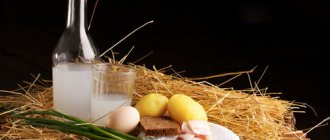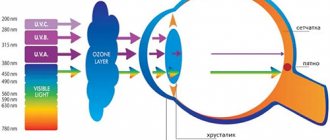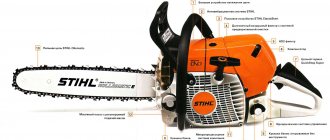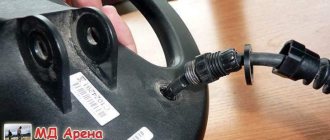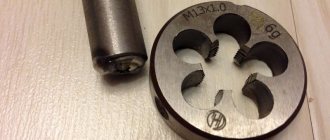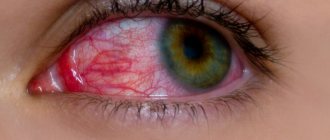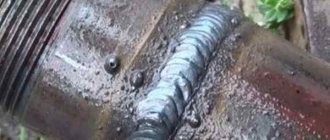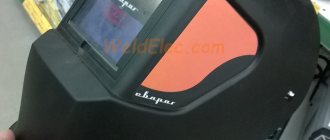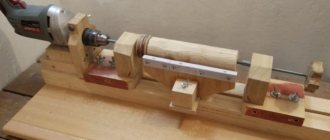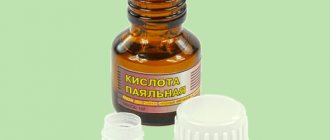It's easy and interesting to communicate here. Join us!
This is very dangerous, you don’t know now how much alcohol is in moonshine? How to use it now and in what doses.
Glass shards are dangerous.
There is nothing dangerous there other than fragments.
Our alcohol meter also broke a month ago. We threw it away. Nothing bad happened to us =) But it’s better to throw it away and buy a new one. It won't be of any use anyway)
In the process of preparing moonshine, the most important issues are the quality and strength of the product. How can we determine the strength (degree) of a product? To determine the strength, you can use a device called an alcoholometer, which is a type of hydrometer.
The functional feature of the alcohol meter depends on the purity of the solution obtained during distillation of the mash, i.e. the purer the water + alcohol solution, the more accurate the strength indicator of the resulting product. The most common type of alcoholometer model is made in the form of a glass float, the wide lower part of which is filled with a load of shot (usually lead) and filled with resin (some models use mercury)
,
and the upper narrow part contains a paper scale with divisions. There is a generally accepted division into laboratory and household alcohol meters.
Unlike a household alcohol meter, it has a high level of accuracy in determining alcohol strength. A household alcohol meter usually consists of one device that operates in the range of 0-96%. It differs from laboratory analogues in less accuracy. If all measurement conditions are met, the error is up to 0.5%. More suitable for beginner moonshiners. Let's take a closer look at a laboratory alcohol meter (what is it for and how to use it). In Russia, the most popular alcohol meters of this type, corresponding to GOST 18481-81, are the sets ASP-1 (11 pieces included), ASP-2 (18 pieces), ASP-3 (3 pieces) with different gradations. Most experienced moonshiners use the ASP-3 kit, which has a scale division price of 1%. The set consists of three hydrometers: 0-40%, 40-70% and 70-100%.
Initial conditions for carrying out measurements 1. The alcohol meter should be stored in its original packaging, without subjecting it to shaking or other mechanical influences that could affect its integrity and accuracy. Glass models are very fragile and break easily. If cracks, scratches or other defects appear, the device is damaged. 2. Most alcohol meters are calibrated to operate in a solution whose temperature is 20°C (deviation of no more than 0.5 degrees is allowed). It is important to remember that at higher temperatures the device begins to overestimate the strength, and at low temperatures it underestimates. Failure to comply with the temperature conditions causes a measurement error of up to 7%. The density of the liquid also depends on atmospheric pressure, the recommended value is 760 mm Hg. Art. How to measure strength with an alcohol meter 1. Dilute alcohol with water, wait 5-10 minutes until the intensity of the chemical reaction decreases (at this time a lot of heat is released). 2. Wipe the alcohol meter with a dry, clean cloth so that no greasy or dirty stains remain. The device must be completely dry before immersion in liquid. 3. Bring the solution temperature to the recommended one – 20°C. An approximate correction of alcohol meter readings depending on the temperature of the alcohol is shown in the table.
| Range (strength) | 5°C | 10°C | 15°C | 20°C | 25°C | 30°C | 35°C |
| 20-60% | +6% | +4% | +2% | — | -2% | -4% | -6% |
| 65-80% | +5% | +3% | +2% | — | -1% | -3% | -5% |
| 85%+ | +4% | +3% | +1% | — | -1% | -3% | -4% |
4. Pour the alcohol-containing liquid into a tall, narrow container of small volume (measuring flask, cylinder or beaker). 5. Lower the alcohol meter with its wide bottom part into the liquid in the middle of the vessel. If you throw it too quickly, the device may hit the bottom and break. The alcohol meter must not touch the walls of the vessel!
6. Wait for the alcohol meter to stabilize at the same level. If it sank, it means it is faulty or not designed for this strength. For example, the device operates in the range of 0-40%, but is dipped in 70% alcohol. 7. View the result. Depending on the design of the alcohol meter, readings are taken from the upper edge of the meniscus (red arrow) or from the lower edge (green arrow). This point must be indicated in the instructions. 8. Remove the alcohol meter from the volumetric flask, wipe it, and put it in the original storage case.
The hydrometer/alcohol meter is a sealed glass flask in the form of a float. In the wide lower part there is a weight, lead shot in resin or mercury. There is a scale in the upper narrow part. The alcohol meter is a capricious and fragile device; the slightest crack or chip affects the accuracy. If the integrity of the alcohol meter is damaged, it must be replaced. How to deal with a broken hydrometer.
If the weighting agent is shot in epoxy resin, fragments pose a great danger. Strain the product through a sieve and cheesecloth to get rid of shot and fragments.
The fraction is inconvenient. It is convenient to collect lead balls that have rolled on the table or floor with a magnet. From the series, what would happen if the hydrometer broke in a large container with a product. Is distillation required? No, distillation is not required, you just need to strain it thoroughly. Cotton pads, paper films for coffee, gauze folded several times, even disposable medical masks and caps are suitable for this.
If the broken alcohol meter turns out to be mercury, take measures according to the mercury collection situation. We strongly DO NOT recommend distilling or drinking alcohol after such an accident. We remind you that mercury is a toxic metal.
Source: rufus-rus.ru
Types of alcohol meters
First, before choosing an alcohol meter, you need to know which type is right for you. Possible options:
- A household alcohol meter is used to check the alcohol content from zero to ninety-six degrees in liquids such as vodka, moonshine, and so on.
- A shot glass, unlike a household appliance, measures the amount of alcohol content of an alcoholic drink in small containers such as shot glasses, shot glasses, and so on.
- Laboratory - this is the most high-precision device and is used in production and for scientific work.
- Optical - used to check the strength of alcoholic drinks containing sugar and various fruit liqueurs up to 40 degrees.
- A wine meter is used to check the alcohol content of wine. The device measures not only its amount in the product, but also how much sugar it contains. This alcohol meter is not suitable for testing strong drinks, because its reading scale is from 0 to 12% alcohol and from 0 to 25% sugar content.
How to choose an alcohol meter?
Choosing an alcohol meter is not difficult. First you need to decide what drinks you need it to measure. When purchasing, you need to check the integrity of the flask so that there is no damage to it: chips, cracks, and so on. It is important to buy the device in trusted places - at sales points specializing in the sale of laboratory supplies, in hardware stores or in online stores selling goods for the production of alcoholic beverages. You can also purchase a hydrometer in stores for car enthusiasts. People who have had the opportunity to use Russian and Chinese-made devices prefer domestic manufacturers.
How to choose the right hydrometer and where to buy it?
When choosing a device, pay attention to the integrity of the vessel so that there are no cracks, chips or other damage. Do not purchase an alcohol meter from dubious retail outlets and at a very low price, because you can purchase a low-quality product that will incorrectly determine the percentage of alcohol. Judging by the reviews of those who have used domestic and Chinese-made alcohol meters, they preferred our manufacturer, noting the greater accuracy and quality of such devices.
In general, you can buy it in almost any hardware store or market. You can also find them in the Medtekhnika chain of stores or in other stores selling laboratory equipment. If you are a car enthusiast, then a hydrometer with a scale for indicating the percentage of alcohol can be bought at a car store. A good hydrometer can be ordered from a specialized online store that sells goods for winemaking and others.
Thank you for creating this topic, I'm sure it will be useful to someone.
three years ago, I did the same thing, plus I reinforced the 36-41 hydrometer with thread (it’s lying), the main one broke, I’m waiting for a new one, I’m using this.
So, friends, we are not in a hurry to throw it away! KOK, 24 Feb. 12, 00:06
And how accurate is what you glued together, thread, glue and degree lie. No, it’s better to wait for a new one and continue the process. And why the hell should I glue it, it broke, but it broke yesterday, I threw it away and forgot, wait for a new one.
slavo4ka, 24 Feb. 12, 00:24
Last ed. 24 Feb. 12, 00:35 from KOK
Hmm, you can’t trust the breech these days, the dog is lying, everything is lying.
boreyzms, 24 Feb. 12, 00:36
That’s how it is, that’s how it is. And when the mash is standing, there’s nothing to wait for, and there’s no need to. If there’s an option. KOK, 24 Feb. 12, 00:32
A degree or two, what's the difference? ???? Now, if it's 10, then that's another question. A hydrometer is nonsense - look at the ASP scale... 5 degrees of accuracy - it’s a piece of cake to do it yourself. Or re-calibrate the auto-hydrometer. And wait for 2 glass tubes and a piece of paper for 900 rubles. excuse me))
How to use the device?
First of all, you need to wipe the device from greasy or dirty stains, and it should be immersed dry. To check the alcohol content in a liquid, you need to immerse the hydrometer in a tall container with alcohol-containing liquid. This should be done carefully; it is advisable to lower it to the very bottom of the container. Otherwise, if the alcohol content is high, the device may hit the bottom of the vessel and break.
The alcohol meter should be approximately in the center of the container, without touching the walls of the container. Next, you need to wait until the device rises to the surface and stops, then look at the scale that determines the alcohol content. To make measurements more accurate, the liquid temperature should be about 20 degrees. There are also devices with a mercury scale that shows the alcohol content.
Determination of alcohol content
Before starting measurements, you must make sure that the device is in working order and has no visible defects, such as cracks or scratches. If all conditions are met, there should be no problems with the measurement.
To determine the alcohol concentration in a solution, do the following:
- Wipe the alcohol meter dry with a piece of clean, dry cloth so that no dust or grease particles remain on it.
- Pour the test solution into a tall narrow vessel of small volume (glass, volumetric flask) and bring the temperature of the liquid to 20°C.
- Immerse the wide part of the hydrometer in the solution so that the device does not touch the walls of the vessel. All manipulations must be carried out very carefully. If you drop the alcohol meter too quickly, it may hit the bottom of the container and break.
- Wait until the device stops swaying and stabilizes at the same level. If the alcohol meter sinks, it is either damaged or not designed for the strength of the solution being measured (for example, a device with a 0-40% scale is immersed in 70% alcohol).
- Evaluate the result obtained. In most alcohol meters, readings are taken from the lower edge of the meniscus, but it also happens the other way around. This nuance is certainly indicated in the instructions. To avoid mistakes, you need to start examining the scale from below - first lower your eyes just below the liquid level, looking at the elliptical base of the meniscus, and then gradually raise your gaze, watching how the ellipse transforms into a straight line.
- Remove the device from the container, wipe it thoroughly and put it in the original packaging for storage.
Check for accuracy
You can check the accuracy of an alcohol meter at home by comparing the readings of several devices, or by comparing the alcohol meter readings with the indicated alcohol content on the label of a quality product. But do not forget that the temperature of the substance being measured should be twenty degrees; when it changes, the instrument readings also fluctuate. And also in drinks containing added sugar and fruit liqueurs, the hydrometer will show incorrect results.
DIY alcohol meter
However, if there is no opportunity or desire to buy such a device, then you can make it yourself. And we can say with confidence that homemade alcohol meters are not much inferior to factory instruments.
From a ballpoint pen
To make such a device you will need:
- a ballpoint pen case (the simplest one) no more than 14 centimeters in length;
- a plastic container for nasal drops and small shot (you can also use finely chopped steel wire or finely chopped lead for weight).
The following is done:
- The lower part of the handle is cut off by half a centimeter.
- To make it easier for the pen case to fit into the neck of the drop bottle, you need to hold it in hot water.
- The pen case is carefully screwed into the neck of the bottle.
- The workpiece is lowered into a container with warm water and a weighting agent is loaded through the upper hole until it is immersed in water one and a half to two centimeters from the neck. A mark is made on the case (it will be 0).
- Carefully bury the glue inside to fix the weighting material and screw the cap tightly.
- The alcohol meter is immersed in a container with 40-degree vodka. Mark 40.
- Use a ruler to measure the distance from 0 to 40 and divide by 40. This reading will correspond to one degree.
- Using the data obtained, a scale is formed. The alcohol meter is ready.
How to use an alcohol meter correctly - instructions and nuances
Most of the fantastic results of beginners, for example, distilled moonshine at 98 degrees, or 0% alcohol in a brew that was actively fermented and drained, are explained by the incorrect use of measuring devices. If you dip a hydrometer in any liquid that does not contain alcohol, the device will still show a certain strength value, since it gives a result based on density. I'll tell you how to use an alcohol meter to always get the correct readings. Despite the external primitiveness and simplicity of the design, there are many nuances in the work.
An alcohol meter is a type of hydrometer (a device that measures the density of liquids) designed to determine the amount of ethyl alcohol in a solution consisting of alcohol and water without other impurities that can affect the density.
Most models are made in the form of a glass float, the wide lower part of which is filled with a weight of shot and filled with resin (some models use mercury), and the upper narrow part contains a paper scale with divisions.
How does an alcohol meter work?
The principle of measuring strength with an alcohol meter is based on density indicators and Archimedes' law. When the instrument is placed in a liquid, part of it is pushed out by a weight and reaches a division corresponding to the percentage of alcohol contained in the drink.
It should be borne in mind that a regular device (unless we are talking about expensive professional equipment) works exclusively in water-alcohol mixtures, so it cannot be used for other products.
Reference! Before beer is bottled at factories, its restorative strength is measured within 48 hours. The figure should not change during this period. This is the only way to ensure that the data obtained is true. Also, don’t forget to read about the history of beer.
You can determine the strength of moonshine or vodka using such a tool without any problems, but it is not suitable for wine, liqueur, absinthe, liqueur, or vermouth. Various impurities in the form of essential oils, juices and sugar affect the reliability of measurements downwards, i.e. the recorded value will be less than the real one.
Types of alcohol meters
Laboratory - a professional hydrometer for determining the strength of a solution with a high degree of accuracy. In Russia, the most popular alcohol meters of this type, corresponding to GOST 18481-81, are the sets ASP-1 (11 pieces included), ASP-2 (18 pieces), ASP-3 (3 pieces) with different gradations.
Most experienced moonshiners use the ASP-3 kit, which has a scale division price of 1%. The set consists of three hydrometers: 0-40%, 40-70% and 70-100%. This is enough to make homemade alcohol. ASP-1 and ASP-2 have a gradation of 0.1%.
ASP-3 set
Household - alcoholometer for measuring the strength of alcohol, vodka or moonshine at home. Typically consists of a single device operating in the 0-96% range. It differs from laboratory analogues in less accuracy. If all measurement conditions are met, the error is up to 0.5%. Suitable for beginner moonshiners.
The most affordable household alcohol meter
Digital (electronic) - works according to a different algorithm than traditional hydrometers. It is characterized by high accuracy of readings and fast response of the sensor. Additionally, most devices are equipped with a thermometer. The disadvantage is the high price.
Optical - used to determine the concentration of alcohol in a multicomponent solution (water, ethyl alcohol and other additives). Suitable for wines and liqueurs. It works according to a special algorithm, but in a narrower range (usually from 0 to 25 or 40 degrees).
Methods for determining the strength of moonshine without an alcohol meter (hydrometer):
Make an alcohol meter quickly from scrap materials:
- take a hollow tube or a ballpoint pen without a rod, or any material (not soluble in alcohol) from which you can make a hollow device, 10-12 cm long, even a thin fishing float will do;
- A real moonshiner will definitely have in stock a small amount of the finished product, the strength of which is precisely known. For example, I always label containers with the product - raw materials and strength. Therefore, we take two types of products with a precisely known strength. For example, there are 2 bottles with 80 and 40 degrees liquid;
- weight one end of the prepared tube so that after placing it in an 80-degree liquid, its level reaches almost to the top of the tube, i.e. the tube protruded from the liquid by 1-1.5 cm. You can make it heavier with any available object: shot, wrap it with wire in several layers, wrap a ring with thread, etc. We make a mark on the tube where the liquid level is indicated;
- We take a 40-degree drink and place a homemade alcohol meter in it, make a mark on the tube according to the resulting level;
- Next we mark the scale at regular intervals. Between the 80 mark and the 40 mark there will be a 60 mark, between 40 and 60 there will be a 50 mark, and between 60 and 80 there will be a 70 mark;
- That’s all, you can approximately determine the strength of the product.
If you don’t want to bother with a homemade alcohol meter, you can try the drop counting method (not entirely accurate).
- prepare a pipette and a tablespoon;
- We take a liquid into a pipette, the strength of which you want to determine and drop 20 drops into a spoon. You may have to pipette several times;
- We set fire to the liquid in the spoon and wait until the fire goes out on its own, i.e. all the alcohol will burn out;
- We count how many drops are left. If exactly half is left (10 drops), then the strength of the product is approximately 50 degrees, if there are 12 drops, then the strength is about 40 degrees, and so on. That is, we calculate the ratio of alcohol to water.
This method is not entirely accurate, since a product with a strength of 20 degrees no longer burns, but it still contains alcohol.
Source: zen.yandex.ru
In the process of preparing moonshine, the most important issues are the quality and strength of the product. How can we determine the strength (degree) of a product? To determine the strength, you can use a device called an alcoholometer, which is a type of hydrometer.
The functional feature of the alcohol meter depends on the purity of the solution obtained during distillation of the mash, i.e. the purer the water + alcohol solution, the more accurate the strength indicator of the resulting product. The most common type of alcoholometer model is made in the form of a glass float, the wide lower part of which is filled with a load of shot (usually lead) and filled with resin (some models use mercury), and the upper narrow part contains a paper scale with divisions. There is a generally accepted division into laboratory and household alcohol meters. Unlike a household alcohol meter, it has a high level of accuracy in determining alcohol strength. A household alcohol meter usually consists of one device that operates in the range of 0-96%. It differs from laboratory analogues in less accuracy. If all measurement conditions are met, the error is up to 0.5%. More suitable for beginner moonshiners.
Let's take a closer look at a laboratory alcohol meter (what is it for and how to use it). In Russia, the most popular alcohol meters of this type, corresponding to GOST 18481-81, are the sets ASP-1 (11 pieces included), ASP-2 (18 pieces), ASP-3 (3 pieces) with different gradations. Most experienced moonshiners use the ASP-3 kit, which has a scale division price of 1%. The set consists of three hydrometers: 0-40%, 40-70% and 70-100%.
Initial conditions for carrying out measurements 1. The alcohol meter should be stored in its original packaging, without subjecting it to shaking or other mechanical influences that could affect its integrity and accuracy. Glass models are very fragile and break easily. If cracks, scratches or other defects appear, the device is damaged. 2. Most alcohol meters are calibrated to operate in a solution whose temperature is 20°C (deviation of no more than 0.5 degrees is allowed). It is important to remember that at higher temperatures the device begins to overestimate the strength, and at low temperatures it underestimates. Failure to comply with the temperature conditions causes a measurement error of up to 7%. The density of the liquid also depends on atmospheric pressure, the recommended value is 760 mm Hg. Art. How to measure strength with an alcohol meter 1. Dilute alcohol with water, wait 5-10 minutes until the intensity of the chemical reaction decreases (at this time a lot of heat is released). 2. Wipe the alcohol meter with a dry, clean cloth so that no greasy or dirty stains remain. The device must be completely dry before immersion in liquid. 3. Bring the solution temperature to the recommended one – 20°C. An approximate correction of alcohol meter readings depending on the temperature of the alcohol is shown in the table.
| Range (strength) | 5°C | 10°C | 15°C | 20°C | 25°C | 30°C | 35°C |
| 20-60% | +6% | +4% | +2% | — | -2% | -4% | -6% |
| 65-80% | +5% | +3% | +2% | — | -1% | -3% | -5% |
| 85%+ | +4% | +3% | +1% | — | -1% | -3% | -4% |
4. Pour the alcohol-containing liquid into a tall, narrow container of small volume (measuring flask, cylinder or beaker). 5. Lower the alcohol meter with its wide bottom part into the liquid in the middle of the vessel. If you throw it too quickly, the device may hit the bottom and break. The alcohol meter must not touch the walls of the vessel!
6. Wait for the alcohol meter to stabilize at the same level. If it sank, it means it is faulty or not designed for this strength. For example, the device operates in the range of 0-40%, but is dipped in 70% alcohol. 7. View the result. Depending on the design of the alcohol meter, readings are taken from the upper edge of the meniscus (red arrow) or from the lower edge (green arrow). This point must be indicated in the instructions. 8. Remove the alcohol meter from the volumetric flask, wipe it, and put it in the original storage case.
Source: samogonok.ru
Initial conditions for measurements
1. The alcohol meter should be stored in its original packaging, without subjecting it to shaking or other mechanical influences that could affect its integrity and accuracy. Glass models are very fragile and break easily. If cracks, scratches or other defects appear, the device is damaged and requires replacement.
2. Most alcohol meters are calibrated to operate in a solution whose temperature is 20°C (deviation of no more than 0.5 degrees is allowed). At higher temperatures, the hydrometer overestimates the strength, at low temperatures it underestimates. Failure to comply with the temperature conditions causes a measurement error of up to 7%. The density of the liquid also depends on atmospheric pressure, the recommended value is 760 mm Hg. Art.
3. All alcohol meters (except optical, electronic and wine meters) are designed to work with liquids containing only ethyl alcohol and water. Any other impurities (sugar, juice, tannins after infusion in a barrel, heavy metal salts in water and even fusel oils of poorly purified moonshine) change the density of the solution, leading to inaccurate measurements.
How to store it correctly
In most cases, in the homes of ordinary housewives or novice winemakers, alcohol meters are stored among other household utensils and often, when the device is needed, it is difficult to find it in a huge number of other items and accessories. Considering that a hydrometer is a precision measuring instrument, storing it in this way is strictly prohibited.
Experienced moonshiners and winemakers understand that during improper storage, the settings and accuracy of the alcohol meter can be disrupted, and this will lead to problems in the further production of alcohol.
Therefore, such craftsmen store hydrometers exclusively in factory cases and packaging, in places where the device will not be subject to shaking or other mechanical stress that could compromise its accuracy or the integrity of the case.
Most alcohol meters are made of glass and are fragile, so they can be easily broken. And the appearance of scratches, cracks or chips on the surface of the device body increases the likelihood that it has ceased to show accurate measurement results and needs to be replaced, since it cannot be repaired or restored.
How to measure strength with an alcohol meter
1. Dilute the alcohol with water, wait 5-10 minutes until the intensity of the chemical reaction decreases (at this time a lot of heat is released).
2. Wipe the hydrometer with a dry, clean cloth so that no greasy or dirty stains remain. The device must be completely dry before immersion in liquid.
3. Bring the solution temperature to the recommended one – 20°C.
An approximate correction of alcohol meter readings depending on the temperature of the alcohol is shown in the table; the calculation can be done using a calculator.
Source
Alcohol meters and their types
The design of the alcohol degree meter depends on its type. There are mechanical (glass), electrical (metal) and optical.
The last type of alcoholometer will measure the strength of wine with the greatest accuracy. In addition, it allows you to determine the amount of sugar in the drink. This is specifically a wine alcoholometer; other types are not suitable here.
Metal
It works on the principle of changing the resistance of a thermal element located in a metal tube. It has a hole where the evaporated steam enters during the distillation of the mash. After this, the readings are displayed on the electronic display.
Its peculiarity is that you can immediately measure the alcohol strength and temperature in the cube. A hydrometer for moonshine is considered the most accurate of all.
Glass
The mechanical household version is a glass vessel with a weight filled with resin in the lower part. The flask narrows towards the top, and there is also a scale with divisions that show the degree of alcohol.
What are they?
- Laboratory - designed to measure the volume of alcohol in mixtures from which various household products are made. Such a device is quite accurate, so it is usually used for professional determination of the strength of a solution. It works with very high precision. This type of hydrometer has three varieties - it determines the percentage of alcohol from 0% to 40%, from 40% to 70% and from 70% to 100%.
- Household - used to determine the percentage of alcohol in liquids at home. It is a glass vessel with mercury in the lower part. At the top there is a scale that immediately shows the percentage of alcohol content in the liquid. When using it, certain conditions must be observed. Firstly, the solution temperature should be 20 degrees! Secondly, besides water, there should be no impurities in the liquid! Thirdly, the hydrometer should not touch the walls of the container in which the measurement is being made!
- Electronic (digital) is good because its indicators are much more accurate than a regular hydrometer with a scale. However, the cost of this option will be slightly more expensive. Electronic is characterized by stable operation and fast sensor response.
- Optical - used to determine the concentration of ethyl alcohol in a water-containing mixture or multicomponent solution. And also to account for alcohol during its production. The amount of alcohol in this device is calculated according to a specific algorithm embedded in the microprocessor program. The temperature range of measured liquids in an optical alcoholometer is wider (than in a household one), it ranges from plus 5 and inclusive to plus 40 degrees.
- Universal is an unpretentious and convenient device for determining the strength of any liquid containing alcohol. The scale of such a hydrometer has a scale from 0 to 96 degrees.
- A glass hydrometer is a compact hydrometer for determining strength in a small vessel, for example, a glass. The scale available in such a device (0-80 g) allows you to determine the alcohol content in the liquid with maximum accuracy.
- A wine meter is a type of alcoholometer that is used to determine the strength of wines, as well as the amount of sugar in the drink. This device is used in everyday life and is an invariable companion of any winemaker.
Rules for using an alcohol meter
To measure correctly, you need to follow some simple rules. The accuracy of the readings will depend on their compliance:
- If the alcohol has just been diluted with water, wait a few minutes until the reaction takes place.
- Before use, make sure that the device is dry and clean. If not, wipe it carefully with a rag.
- It is desirable that the temperature of the liquid is close to 20°C. If it is not possible to carry out measurements under such conditions, you need to take into account the dependence of the alcohol density results on temperature according to the table.
- Immerse the hydrometer slowly and strictly in the middle, without touching the edge of the container and its walls.
Following the recommendations will allow you to measure degrees correctly with an alcohol meter. The need for further distillation or the waiting time for the end of fermentation depends on this.
How does temperature affect: table
When taking measurements, it is necessary to look at the readings of a thermometer lowered into the liquid in advance. Keep in mind that the strength of moonshine varies greatly depending on the temperature.
| Alcohol percentage/°C | 5 | 10 | 15 | 20 | 25 | 30 | 35 |
| From 20 to 60% | +5 | +3 | +1 | — | -1 | -3 | -5 |
| From 65 to 80% | +4 | +2 | +1 | — | -2 | -2 | -4 |
| From 85% and above | +3 | +2 | — | — | -2 | -2 | -3 |
- The higher the temperature, the lower the alcohol content in the liquid.
- The more alcohol evaporates, the longer it takes to heat the liquid.
- The dependence of strength on temperature is exactly the same as that of alcohol content.
Be sure to adjust the alcohol meter readings depending on the temperature using the table. In this case, it is better to double-check these fortresses.
So what, I will never know how many degrees there are in my tincture?
Accurate to the nearest degree - never. But fortunately, we are not Medeleev professors writing dissertations on metrology, but home winemakers and moonshiners, who care, first of all, about the taste and organoleptic characteristics of the drink. In other words, if we are talking about the strength of the tincture-liquor-liqueur, approximate, calculated data will be enough. So you need to rely on your own calculations and feelings - you want it to be less strong, just add water, what’s wrong with that? Just remember to give this drink an extra couple of weeks of rest before drinking.
However, there is a special type of alcohol meters called “optical”. These are complex and expensive devices, most often with a limited range of measurements (usually 0-40° or slightly higher), but they are capable of determining both the amount of alcohol and the amount of sugar in a drink. But experienced winemakers say that everything is not clean here either. They say that an optical alcohol meter accurately measures only liquids consisting of water, alcohol and sugar, and other impurities seriously reduce the adequacy of measurements. In general, the same troubles, only in profile.
The density of the finished product is calculated based on the ingredients included in its composition. For example, you prepared using a liter of 70-proof alcohol. Let's say that the dried root of the degree was almost not stolen. Then we diluted the tincture with half a liter of water - the strength was about 46-47 degrees. And then they sweetened it with a syrup made from 100 ml of water and 100 ml of sugar - from the water the strength dropped by another three degrees, the sugar “ate” about the same amount - after all, the volume of the drink increased. The estimated strength of the drink is 40-41 degrees. The situation is much more complicated with tinctures made from berries - dried ones actively absorb alcohol, fresh ones contain a lot of water, reducing the alcohol strength by an average of 10-15 percent, or even more, depending on the juiciness and structure of the fruit. In general, the devil will break his leg.
Instructions for use
To ensure correct measurements, you must follow the instructions:
- Dilute the alcohol with water and wait for the reaction to complete.
- Wipe the alcoholmeter with a dry and clean cloth.
- Measure the temperature of the solution to adjust the readings.
- Pour the alcohol-containing liquid into a small container (preferably glass).
- Lower the alcohol meter in the middle of the vessel with the wide part down. Under no circumstances should you do this abruptly, as it may fall to the bottom and break.
- Wait until the device calms down and check the readings. If it drowns, you should use another one, which is intended for stronger drinks.
After the measurements, look at the instructions that are in the alcohol meter (or find a photo of it on the Internet), there is a table with the results. If necessary, adjust the data on the table of alcohol content depending on temperature. At the end, the alcohol meter is wiped and put into its case.
We determine the strength depending on the temperature in the cube
Most industrial stills are equipped with a thermometer, which is used to monitor the heating temperature of the mash. If you know something about temperature indicators, you can determine when the first drops will begin to drip, when you can finish selecting the “heads” and to what level the “body” should be driven.
- At 88 - 89°C, the alcohol begins to evaporate, that is, a trickle of alcohol is about to flow. As soon as you notice the first drops in the tube attached to the coil (transparent silicone tubes are most often used now), turn down the heat or switch the stove to a lower mode; you should not sharply heat the mash any further, otherwise foam may erupt.
- Select the tails (this is approximately 10% of the expected amount of moonshine) and begin to distill the main part (the body). When you see that the thermometer needle has reached the number 95, it means that the strength of the outgoing liquid is now around 40°.
- The needle moves further, and somewhere at 97°C you need to remove the jar with the main distillate and either take away the tails until the temperature rises to 98°C, or stop distilling.
Having analyzed the coincidence of the temperature in the cube and the strength of the distillate several times, you will know exactly how many degrees the liquid has that is currently flowing into the jar you placed.
How to check for accuracy
To test your alcohol hydrometer for accuracy at home, you can use a reputable brand of vodka. Or they take several devices so that they can compare the readings: if the results are the same, then the devices are accurate. If they differ, you can buy an alcohol-containing liquid in the store, which will indicate the percentage of alcohol. It allows you to check your alcohol meter more accurately. Be sure to take into account the dependence of alcohol strength on temperature.
An alcohol meter is one of the types of hydrometers. It is quite often used in everyday life and in industry. With its help, ordinary winemakers and moonshiners, as well as large factories, can prepare formulations with a certain alcohol content.
Source
